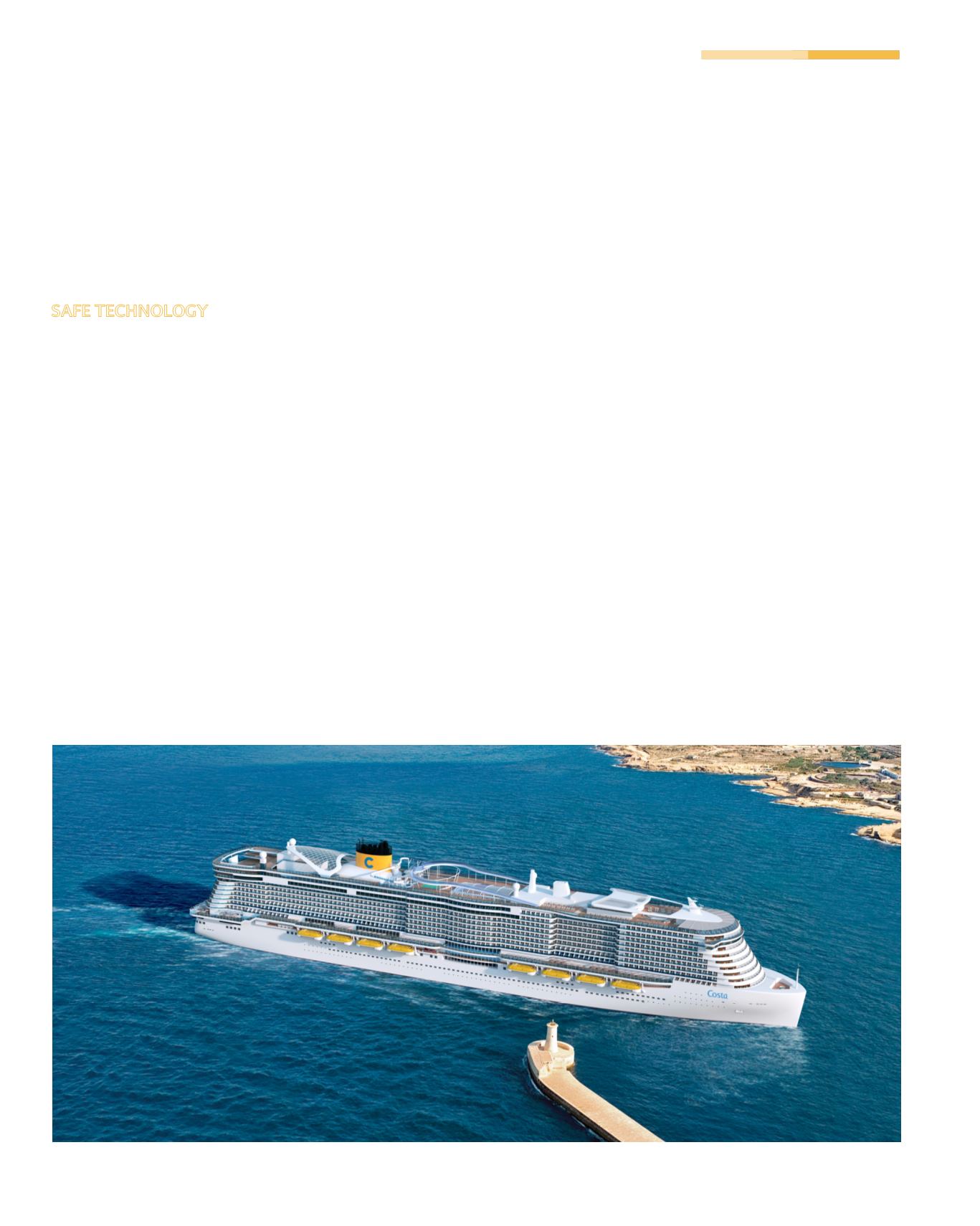

109
TOMORROW
SAFE TECHNOLOGY
LNG has been transported at sea for
more than 40 years and the safety
record is the best of all fossil fuels. The
cryogenic nature of the fuel that needs
to be taken into account and its use
are regulated by the IGF Code
1
, which
contains mandatory provisions for the
arrangement, installation, control and
monitoring of machinery, equipment
and systems using low flashpoint fuels.
LNG itself is not flammable; methane
– the vapor from LNG – is the cleanest
burning fossil fuel. LNG is odorless,
nontoxic and non-corrosive. Also, while
a great deal of energy is stored in LNG, it
cannot be released fast enough to cause
an explosion.
With flammability limits of between
5 and 15% in air and a self-ignition
temperature that is very high at 580°C
(as opposed to 250°C for diesel) this
is the reason that methane is the
preferred choice of gas for use in home
installations.
Looking at LNG’s safety record and the
associated standards, the risks posed
to the ship, the crew and passengers
are no more than with alternatives,
and less still after taking into account
the Company’s stringent LNG-focused
training and specific certification.
The enforcement of these particularly
demanding standards means further
progress can be made in mitigating any
potential risks related to human error.
1
International Code of Safety for Ships
using Gases or other Low Flashpoint
Fuels, designed to minimize the risk
to the ship, its crew and passengers,
and the environment.
















